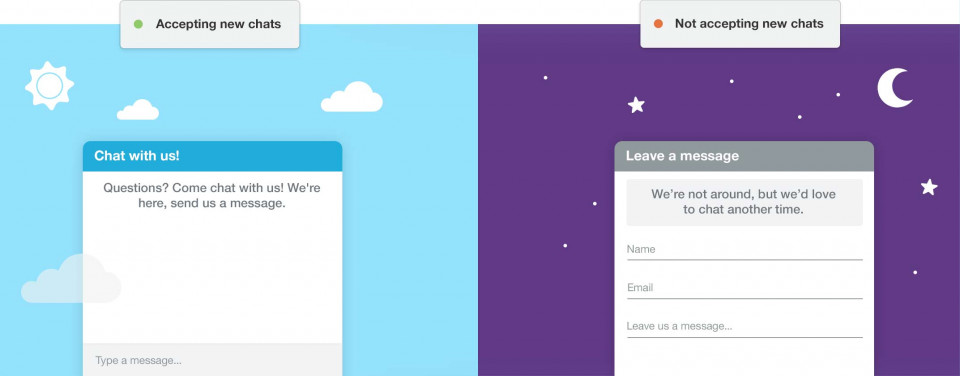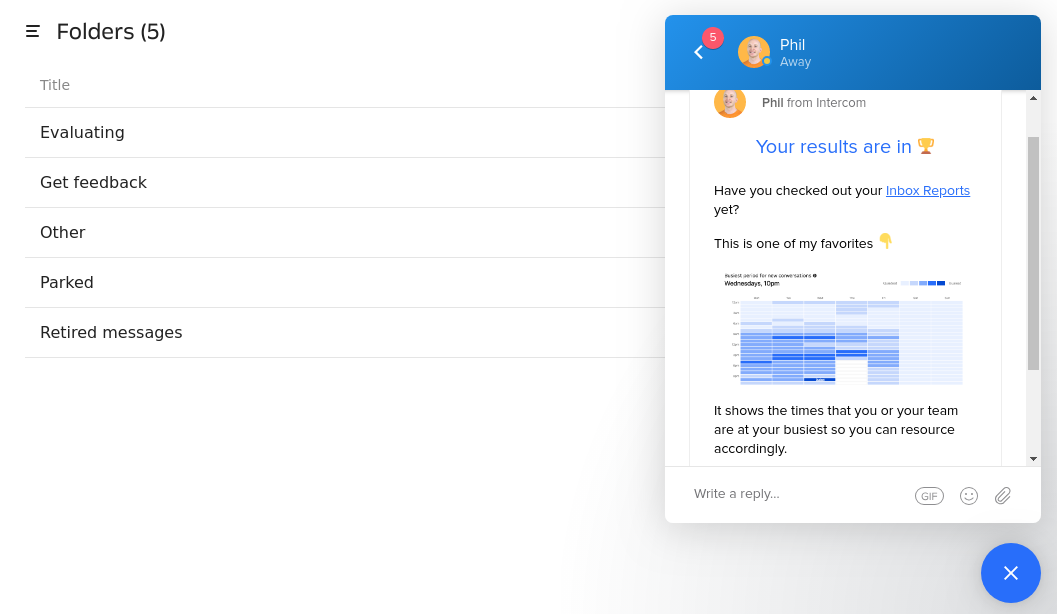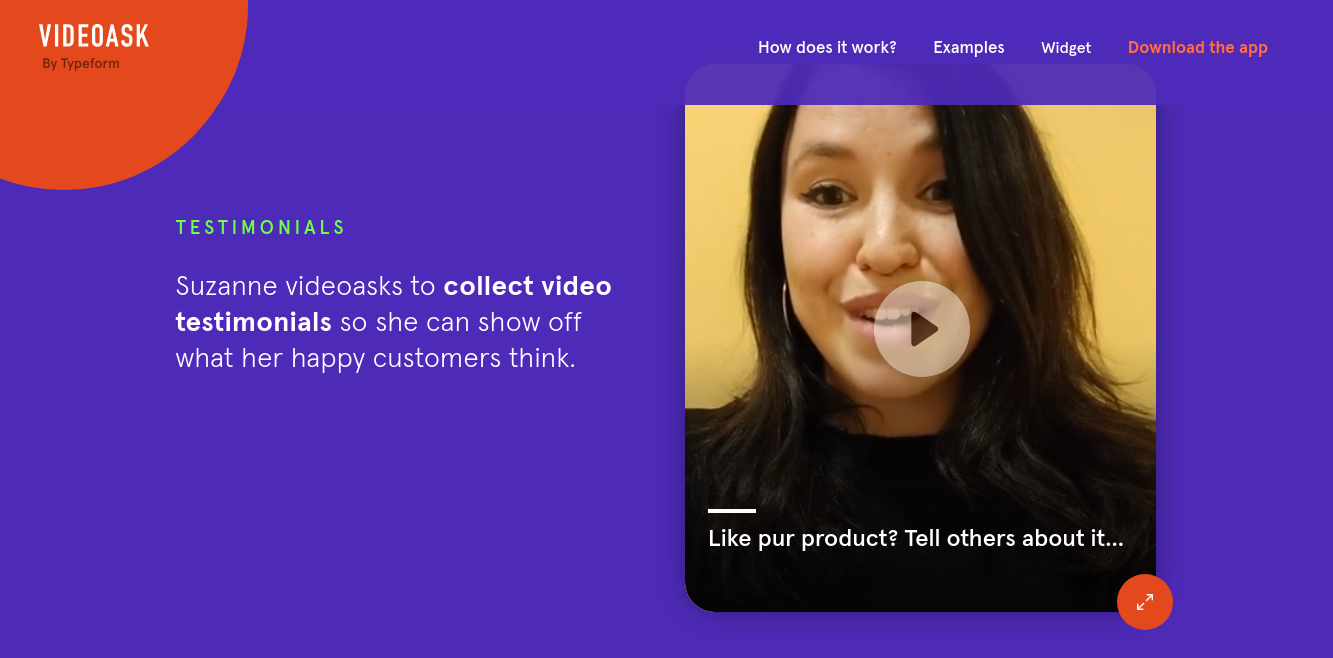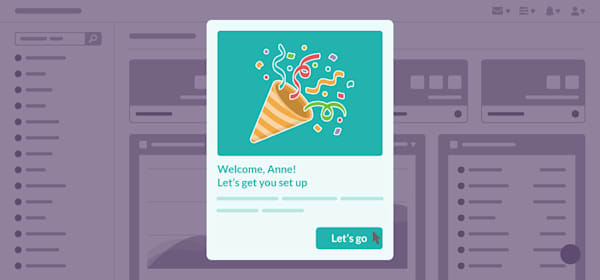In 2019, high-growth SaaS products don't treat their reps as their sole source of revenue or their website as the only way to market. A product-first shift is taking place where sales and marketing are automated in part by experiences that happen inside the product.
For example:
-
Instead of an account manager reaching out to offer a package upgrade, a feature gate highlights value the user is missing and makes a targeted offer in context.
-
Instead of a rep setting up a demo to show a lead the product, products run free trial offers or make getting set up (and qualified for a demo) a low-friction affair.
You probably wouldn't have adopted Dropbox, over Google Drive, if it required a sales demo. Other SaaS companies, like Atlassian, have also employed product-led growth strategies to dominate their space without big sales teams.

With marketing and sales moving inside the product, you need dynamic and targeted user experiences that help engage people in the right way and at the right time.
In this post, we look at the trends that make in-product engagement a competitive necessity, and recommend 8 tools that live inside products and provide great out-of-the-box functionality to drive product-led growth.
No longer a nice-to-have
There are two key trends that make in-product user engagement important for SaaS growth:
#1: Customers want faster communication and solutions
According to DigitalCommerce360, companies who have the strongest customer engagement through different channels retain an average of 89% of their customers, while companies who have weak omnichannel strategies retain just 33%.
People don't want to wait for a human to contact them back. They want to figure things out more quickly than ever and on their own schedule.
#2: Contextual user experiences are expected, and high-converting
By Radicati's research, the number of business emails a person receives every day increased by 14% between 2014 and 2018, and 54% of them are opened from a mobile phone. For desktop SaaS, this means that the chances of converting a user directly over email are getting slimmer and slimmer.
According to EveryCloud, triggered emails can achieve far better results then non-triggered ones. In their research, triggered emails receive 71% higher open rates and 102% click rates.
In-app messages see even higher engagement, with Intercom reporting open rates at typically double the SaaS industry average of 20%.
The time and place to engage users is inside your product, when they have context, high intent and the ability to take key actions/
In response to these trends, tools for marketing automation, feedback collection and in-product engagement have grown quickly. Which solution do you choose? Which platforms offer the best results for user engagement?
Here is our rundown of some of the best ones and what they offer.
Support and engagement tools
The first wave of user engagement tools came in the form of live chat widgets that live in the product and on the website. These were in response to the UX disconnect that comes when you put an email inbox between you and your customers. Bigger platforms built on this, moving more and more essential engagement features inside the product.
Olark is a live chat original

Olark was one of the first live chat solutions for businesses, founded in 2009 out of frustration for how interruptive it can be to switch between platforms while evaluating a product or getting support.
Olark is a customizable chat widget businesses can install on their website to handle conversations with leads, or in the product to provide a live direct line to agents. Alongside live chat, Olark can plug into more asynchronous tools like Help Scout to help support teams collaborate over open tickets.
Since Olark doesn't manage ticketing, or some of the more modern marketing features the market has come to expect, some businesses choose solutions like Intercom to manage a wider range of user communication and marketing activities.
Intercom is a support and engagement platform
While Olark is just one slice of a stack, Intercom is more of a full suite. It can act as a repository for leads, customer data, and support tickets, as well as being your control panel for email marketing, chatbots, and in-app messages.

Intercom opens up a lot of new high-engagement channels for SaaS companies. Behaviourally-triggered and personalized messages can be delivered inside the product to announce features, get feedback, or onboard a new user.
Engagement data is stored in Intercom and can be routed to any of its large catalogue of integrations, including the Chameleon integration.
Like Slack, Intercom has become a platform that its customers can slot their existing tools into, and use as both a data source and destination. The platform approach helps you automate, avoid data silos, and have a deeper insight into customers better than a single-purpose tool.
In-product customer feedback tools
Since in-product messages get roughly double the engagement of emails, it doesn't make sense to limit feedback collection to a user's increasingly-crowded inbox. Tools like Hotjar and Delighted make it simple to measure your user base's happiness or reaction to change, allowing SaaS products to quickly iterate to the needs of their customers and stay agile.
Both of the tools help you on the actionable way to understand your user's behaviour, flow and engagement inside your app.
Hotjar is an all-in-one app for tracking user behaviour
Hotjar helps marketers, product managers and UX designers understand user behaviour, track satisfaction, and improve user onboarding based on the results.
With Hotjar, you can track behaviour by analyzing heatmaps of most-clicked elements on your website, recording and rewatching customer flows through the marketing site or app, and monitor conversion funnels to track drop-offs and find out what needs to be improved.
On the in-app widget side, Hotjar offers various solutions to build different in-app feedback pop-ups, surveys and polls, like this:

Collecting feedback in context helps you understand what impacts customer satisfaction and discover gaps in your product's experience.
Delighted helps you to track and measure your customer satisfaction

While Hotjar is focused both on tracking user behaviour and collecting feedback, Delighted is for delivering surveys to users and making the response data available and actionable.
At the heart of it is this timeless question:
"How are you satisfied with the product on a scale from 1 to 10?".
This question, derived from the Net Promoter Score (NPS) method, determines which category a user is classed as.
Based on the answers, customers can be divided into three groups:
-
Promoters - Customers who answered with 9 or 10. This group of people are very likely to spread the word about your product, which is its own growth engine
-
Passives - Customers who responded with a score of 7 to 8. These customers are satisfied with your product, but not willing to promote it
-
Detractors - Customers who answered with a score of 0 to 6. In this group, you can find customers who are unhappy with your product, and who are likely to cancel their subscription or spread the bad word about your product.
Delighted lets you evaluate your customer happiness, and analyze the results to improve your product based on their opinions. It empowers the agile method of listening to your users and iteratively building the features that will make them most successful. It also empowers customer success teams to detect and reach out to passives and detractors with the aim of winning them back.
The important difference between a tool like Delighted and traditional NPS collection methods like email is in the impact on user engagement. In-app messages typically get more engagement, but reaching a user on multiple channels has a higher success rate.
"The best practice we recommend is the combination. First, run the in-app survey, and if the user doesn't respond after a couple of weeks, send the email survey." - Customer.io
According to the Customer.io team, running both types of surveys can improve your engagement and give you a greater quantity of data to analyze than if you went with a single-channel approach.
Adding to this, implementing video surveys inside your product or marketing site could encourage a better response rate, or responses of better depth and quality.
VideoAsk by Typeform is a frictionless survey widget
VideoAsk is an online tool built by Typeform (an awesome forms product, that integrates with Chameleon) that allows you to embed a video survey on your website or in your application. The examples look really respondable and engaging!

It gives your customers an opportunity to respond to your questions with videos, audio, or text, and encourages a personal connection by showing the real people behind the business. We can see companies using VideoAsk for everything from user feedback to lead qualification.
FullStory adds a simple thumbs up down widget
In-depth understanding of how users engage is the first step towards making improvements. Fullstory captures data from user sessions including navigation paths, clicks, and frustration signals, and feeds these metrics to your analytics platform.
With FullStory's in-app feedback feature, you can ask your users how are they feeling about a page or feature they're viewing, to get quick simple feedback and make iterations in time.

Slotting FullStory into your product makes it possible to do large-scale user research on new feature releases, uncover unexpected drop-offs, and highlight the routine tasks that cause friction and make users feel 😔.
Lead capture and qualification
According to B2B Technology Marketing Community research, 61% of B2B Marketing experts rank generating high-quality leads as their number one priority, while by Marketing Sherpa, only 56% of B2B companies check valid leads before sending them to the sales department.
It's very clear that qualifying leads plays a significant role in any B2B sales funnel. With more quality leads signing up for your product, you have more data to leverage to optimize key flows, and of course an expanded sales pipeline.
Drift helps improves conversions with its chatbot
Drift was built out of a customer need for immediacy. With 55% of visitors spending less than 15 seconds on your marketing site, there's an obvious need to grab attention as quickly as possible.
A slow-moving medium like email (which pulls the user into other inbox distractions) is high-friction for prospective leads. A familiar, modern approach like IM is engaging, more scalable, and easily incorporated into a landing page to capture and qualify leads.

Driftbots guide your website visitors through qualification by asking them various, personalized and triggered questions. You can deliver content, videos, or CTAs depending on the responses users give. It's both a lead qualification engine and a great way to help website visitors find what they want and answer FAQs interactively.
Outgrow boosts lead generation through interactive content
88% of marketers say that interactive content sets them aparts from the crowd. It helps your brand make an impact as you educate and engage your users. Whether it's a quiz for user onboarding or a giveaway on social media—you can boost your lead generation with different types of interactive content—and collect a ton of email addresses along the way.
In-product prompts and guidance
From a product-first perspective, the journey from prospect to paying user has two halves:
- Acquisition: Taking marketing site visitors and converting to a trial / demo
- Activation Engaging trialers in-app to support discovery of "aha" and value
Effective user engagement leverages the context of the product to drive results. Messages should guide users to the right destination (new features, plan upgrade page) by capitalizing on existing user momentum.
Chameleon enables building of guided tours

According to Blueshift, triggered actions drive 624% higher conversion responses than blast and batch notifications. That's because a message referencing activity is inherently more relevant to the user, and a way to use a user's context and momentum to nudge them deeper into the product.
In-product experiences, prompts and guidance are proven to lift user engagement and in-app conversions Chameleon allows you to easily create these without coding.
But with Chameleon's Launchers product you can users learn and discover at their own convenience, by providing a menu of Product Tours. Use a custom widget style or a native element to show the menu, and use it for:
- User onboarding checklists
- Feature release log
- Searchable self-serve help guides
.gif)
The future is in-product
In-app tools play significant roles in differentiating SaaS products by how closely and reactively they can target, reach, and convert users.
However, tools are one half of the puzzle - understanding how each stage of your user journey works is crucial if you want to improve engagement and leverage these tools to their potential.
If you're not sure about your best in-product channels for user communication or if you want to improve user engagement and adopt more users, request a demo to try Chameleon and get personalized consulting to build better in-product experiences.



